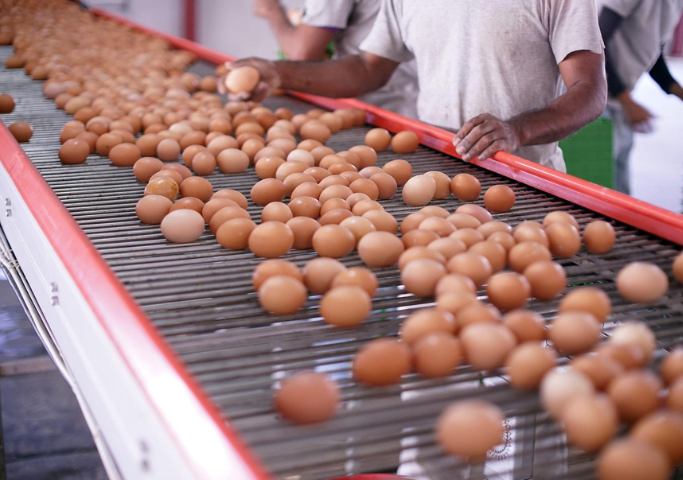
About the industry
In Canada, the Egg Farmers of Canada is the national organization that regulates egg production and marketing. There are more than 1,200 egg farms across Canada, housing some 25 million laying hens that produce more than nine billion eggs per year.
In 2021, there were 1,205 registered egg farms in Canada. The province of Ontario received 35.7% of the federal egg share in Canada, while Quebec ranked second with 20.0%. The western provinces and Northwest Territories had a combined federal egg share of 36.8%, while the Atlantic provinces had 7.1%.
The egg market in Canada is divided into two categories, table eggs and processed eggs. The table egg market accounts for the majority of Canadian consumption (approximately 70%), while processed eggs account for the remaining 30%.
Characteristics of laying hens
Hens raised for egg production go through four different stages: breeder farms, incubator farms, pullet farms and layer farms.
The most popular breed of hen for egg production in Canada is the White Leghorn. They are selected for their characteristics, which are good for egg production. The hens are raised with roosters that fertilize the eggs. The majority of farms use the “all-in all-out” system, which means that all birds arrive together and are moved together to the laying farm. This allows the house to be thoroughly cleaned and disinfected between flocks and reduces the possibility of disease spread that can occur when hens from different farms are mixed.
What are the main egg quality concerns in Canada?
One of the main issues encountered in egg production and to obtain better egg quality is the production system and the type of cages that laying hens spend their lives in. The method of housing greatly influences the birds’ ability to perform natural behaviors and, therefore, their welfare. When considering different housing methods, it can be useful to evaluate them in the context of what we know to be the natural behaviors of laying hens.
Listed below are the different types of housing systems used to raise laying hens on the farm:
- Conventional battery cages
- Enriched and furnished cages
- Cage-free systems – Free Run
- Cage-free systems – Free Range
Other factors that influence egg production are feed-related problems, diseases and poor management practices in intensive layer farms. It is important to provide layers with sufficient water and quality feed with good calcium intake in order to achieve optimal egg production. Management problems, such as inadequate or insufficient lighting, lead to a decrease in egg production.
Conclusion:
Working to obtain a quality egg in every sense of the word is a job that all farms in Canada are doing. Most of the egg production is for home consumption, and given the social trends to consume food where animals go through a good welfare is important. This is why more and more farms are moving away from the cage production system towards a more hen-friendly system. It is important to follow this trend towards the friendly and natural, offering services and solutions according to this type of production so that hens can continue to produce such a high quality and important food for humans as eggs.
Author: Felipe Mendy (veterinarian)



